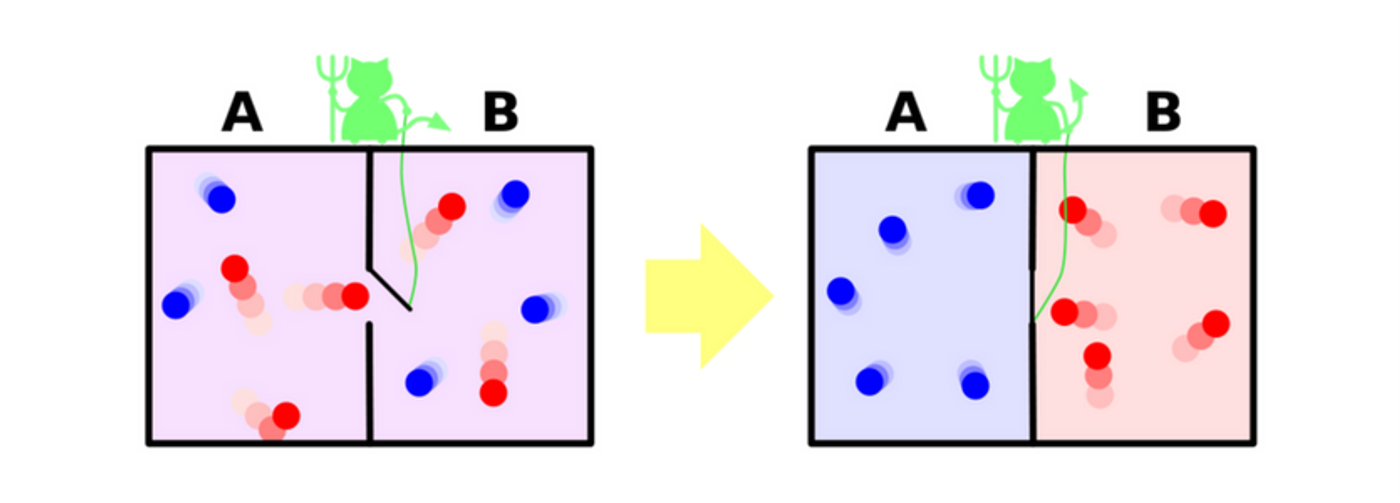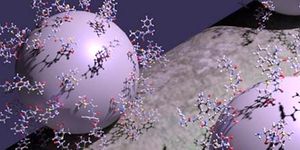Maxwell's Demon in the Quantum State
The second law of thermodynamics states that the total entropy of an isolated system can only increase over time and this increase accounts for the irreversibility of natural processes. In 1867, Scottish physicist James Clerk Maxwell, after whom equations of electromagnetism are named, proposed a thought experiment. In it, there are two gas chambers connected with one valve, and a mischievous demon who allows only high energy particles (hot gas) travel from one chamber to the other by controlling the valve. Hypothetically the gas sorting by the demon involves no work, but the resulted placement of hotter gas one side and cooler gas on the other could be used to do work. The manipulated system has a decreased entropy and therefore violates the second law of thermodynamics.
Schematic representation of Maxwell’s demon thought experiment. Credit: Wikipedia
For a long time rarely anyone had managed to summon a Maxwell’s Demon, even though the idea seemed viable in theory (and tempting). In the realm of quantum mechanics, the laws of classical physics seem to break down, and violation of these laws happened in quantum experimentation. With the rise of quantum computing where the second law of thermodynamics plays a pivotal role, many have speculated that a model of ingenious setup can bring Maxwell’s thought experiment into reality. In an article recently published in the Proceedings of the National Academy of Sciences, a team led by Dr. Janet Anders from the University of Exeter described their success in modeling a Maxwell's Demon in the quantum state using superconducting circuits.
Quantum computation analyzes quantum phenomena in information processing. This state-of-art technology relies on circuits consisting of quantum bits (or qubits) and quantum gates. A qubit and a quantum gate the equivalents to the classical bit and logic gate in the quantum reign. The implementation of the quantum circuit is difficult under normal condition but can be achieved using superconductors based quantum computers, which operate under extremely low temperature.
In the report, Maxwell’s demon was manifested as a microwave or radio frequency cavity. It acts as a filter that selectively allows microwaves of a particular frequency to pass. It is the analog of the gas particle sorting behavior between the two chambers in the original thought experiment. The quantum demon drew energy from one single qubit to conduct the mischievous work – powering up a microwave pulse. What is more interesting, the physicists were also able to quantify the work in the process and the entropy left in the demon (its memory to be exact since it was encoded in a qubit).
Related: superconducting quantum computing
Other groups have constructed simpler models of Maxwell’s Demon, but no one attempted doing so in the quantum realm. Dr. Anders and collaborators have innovated the way to study this phenomenon. “The fact that the system behaves quantum mechanically means that the particle can have a high and low energy at the same time, not only either of these choices as considered by Maxwell,” she explained. “This ground-breaking experiment gives a fascinating peek into the interplay between quantum information and thermodynamics, and is an important step in the current development of a theory for nanoscale thermodynamic processes.”
Source: phys.org









